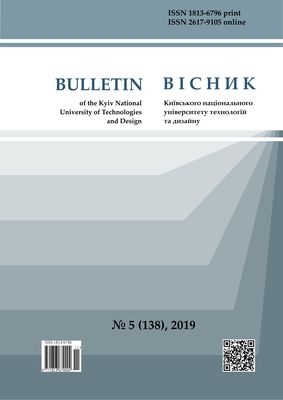THE PECULIARITIES OF CATHODIC AND ANODIC REACTIONS ON CARBON STEEL DEPENDING ON THE DEPTH OF IMMERSION INTO A NEUTRAL SOLUTION
DOI:
https://doi.org/10.30857/1813-6796.2019.5.10Keywords:
steel structures, thin film of moisture, diffusion control, the polarization curves method, the polarization resistance technique, atmospheric corrosionAbstract
The investigation of the depth immersion of the specimens on corrosion rate of steel St3 in 3 % NaCl solution. Simulation of atmospheric corrosion (humid and wet) was performed by immersing of a steel sample by the size of (50×10×2) mm in a neutral solution of 3% NaCl at different depths. By leading the lower boundary of the working surface of the sample to the level of the solution (about 0 mm), humid corrosion was simulated, submerged to a depth of 2 mm (up to the upper boundary), wet corrosion, and 10 mm from the upper boundary - the electrolyte volume. The developed method allowed to carry out electrochemical researches by the method of polarization curves. The polarization curves were measured in the potentiodynamic mode with the potential scanning rate of 5∙10-4 V/s .The working electrode was a sample of steel St3 by the size (10×50×2) mm. A work surface (10×2) mm was separated on the sample, the rest of the surface was isolated with a non-conductive varnish. The results of the investigation of the effect of depth immersion of samples into electrolyte solution on corrosion rate of St3 steel are presented. The conditions of “humid” and “wet” atmospheric corrosion of the metal were simulated by the immersion of samples on a depth from 0 to 10 mm into 3% sodium chloride solution. It was found, that on the base on determination of the rate of particular electrode reactions occurring on the electrode at various depths of its immersion into the solution, the corrosion rate of steel St3 was determined by the value of the limiting diffusion current.
It was shown that the value of limiting current increases from 0.51 to 2 A/m2 with decreasing of the film thickness. It has been established that the cathodic process rate depends both on the concentration of oxygen in the layers of the solution, which are at different distances from the solution/air boundary, and on the speed of its diffusion to the metal surface. Because the method of polarization resistance allows to measure the currents smaller than the currents of oxygen reduction in thin films of the solution, it can be used to estimate the rate of atmospheric corrosion of steel. Based on simulation of humid and wet atmospheric corrosion the effect of immersion depth of the specimens on the cathodic reaction rate of steel St3 in 3 % NaCl solution was established. The cathodic current density (limit diffusion current) is raised from 0,51 to 2 A/m2 under decreasing of immersion depth. The suggested method of simulation of atmospheric corrosion may be used for electrochemical investigations in thin films of moisture of different thickness which are form on the metals and sensors surfaces. The possibility of application of polarization resistance method for atmospheric conditions was presented.

